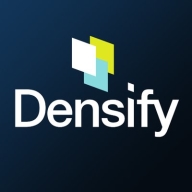

Densify and Nutanix Cloud Manager compete in cloud management, with NCM having an advantage due to its comprehensive functionality and strong perceived robustness over Densify's focused optimization strategy.
Features: Densify enhances predictive analytics for automated cloud resource management, aggregates multiple vCenters and cloud accounts for visibility, and facilitates risk identification and resource planning. Nutanix Cloud Manager provides integration with hyper-converged infrastructure, one-click upgrades for cluster management, and robust self-service and automation features through Prism Pro and X-Play.
Room for Improvement: Densify could improve deployment simplicity and integration capabilities with non-technical tools, and expand its feature set beyond resource optimization. Nutanix Cloud Manager may enhance customization for niche cloud environments, reduce false alerts, and streamline its comprehensive nature for simpler use cases.
Ease of Deployment and Customer Service: Nutanix Cloud Manager integrates hyper-converged infrastructure for seamless deployment and operational integration with strong deployment support. Densify, requiring specialized setups, focuses primarily on optimization challenges and could benefit from more streamlined deployment procedures.
Pricing and ROI: Densify offers competitive pricing with a focus on resource optimization, quickly providing ROI through efficiency gains. Nutanix Cloud Manager's extensive feature set results in potentially higher initial costs but offers significant long-term value through its comprehensive functionalities.
| Product | Market Share (%) |
|---|---|
| Nutanix Cloud Manager (NCM) | 5.3% |
| Densify | 1.0% |
| Other | 93.7% |


| Company Size | Count |
|---|---|
| Small Business | 1 |
| Midsize Enterprise | 1 |
| Large Enterprise | 9 |
| Company Size | Count |
|---|---|
| Small Business | 23 |
| Midsize Enterprise | 22 |
| Large Enterprise | 64 |
Densify is a hybrid cloud and container resource management platform that makes workloads self-aware of their precise resource requirements and automates the resource management and selection process. This solution helps you control your cloud spend and also helps your apps perform and scale better. Densify enables you to match your cloud requirements with the optimal cloud supply. Additionally, Densify is the only technology that leverages patented, predictive machine learning-powered analytics to perform advanced modeling of workload patterns, and provide precise optimization directives. It is ideal for cloud engineers, container platform owners, and IT finance.
Densify works by:
Densify Features
Densify has many valuable key features. Some of the most useful ones include:
Densify Benefits
There are many benefits to implementing Densify. Some of the biggest advantages the solution offers include:
Nutanix Cloud Manager (NCM) is a cloud management tool that drives consistent governance across private and public clouds for its users. The solution brings simplicity and ease of use to managing and building cloud deployments by providing a unified multicloud management that addresses common cloud adoption challenges.
Nutanix Cloud Manager offers four key value drivers:
Nutanix Cloud Manager provides coverage for Nutanix private clouds as well as for VMware's. The solution also supports several popular public cloud providers, including Amazon AWS, Microsoft Azure, and Google Cloud Platform (GCP). NCM provides additional flexibility for users, as it is also available as a fully managed Software as a Service (SaaS). This product allows companies to benefit from all of Nutanix multicloud self-services, application automation, security compliance, and governance, without depending on Nutanix Cloud Infrastructure.
Nutanix Cloud Manager (NCM) Features
Nutanix Cloud Manager (NCM) has features in the four key categories already mentioned. Some of the main capacities of the solution include:
Nutanix Cloud Manager (NCM) Benefits
Nutanix Cloud Manager (NCM) provides its users with several benefits. These include:
Reviews from Real Users
An IT Operations at an energy/utilities company likes Nutanix Cloud Manager (NCM) because the product provides visibility, simplifies operations, and saves time and cost.
Drew P., a network systems administrator at Moda Health, rates NCM highly because the product saves man-hours with excellent speed on outcomes and provides a continuous validation process.
We monitor all Cloud Management reviews to prevent fraudulent reviews and keep review quality high. We do not post reviews by company employees or direct competitors. We validate each review for authenticity via cross-reference with LinkedIn, and personal follow-up with the reviewer when necessary.